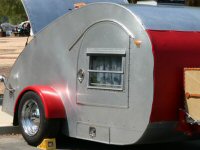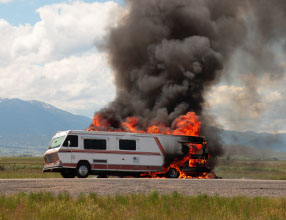I'll weigh in on methods that have worked for me since my first Ham Radio Station at age 12, up to Retirement from supporting Industrial Sites like Research Accelerators and Semiconductor Fabs routinely using Voltages well into 6 digits. Mis-wiring items like Valves controlling corrosive Etchant Gases on Semiconductor Tools has Life -> Death consequences. I'm used to high-stakes situations requiring practices that also have significant Legal consequences. After hours, I've wired everything from large P.A. Systems to Trailers. I won't defend my methods to the bitter end because either you believe in my supporting observations, or you don't. I'm not 'right'. I am experienced.
1. Discussing 'low' temp melting Lead/Tin Solder at all is a red herring. It's largely off the Market. Silver Solder is the de factor standard, and melts at around 500 F [~230 C] degrees minimum. A Table of Solders and respective melting points is in the Wikipedia Article sourced below.
As Gus notes by implication, 70 C, 105 C or 150 C Insulation melting first is the larger concern. I'm in 'violent agreement' with his position above. Properly captured and secured connections don't heat up significantly. So, how flowing Solder behaves is irrelevant because it never goes fluid.
2. Soldered, mechanical connections are used in plenty of Mobile Applications experiencing vibration. Mobile Ham Radio Gear and Hi-Rel Video Broadcast Semi Truck 'Suites' come to mind. Same with transported Concert Sound/Light Rigs, and Tube Amps for Guitars that simply can't be allowed to fail on Stage. Indeed, the methods I prefer are used by those 'ruggedizing' Audio/Video Gear for higher reliability. Portable Cell Sites are brought in for large Trade Shows to not collapse Cell infrastructure in/around Conference Centers.
3. The salient text from Square D is copied below. The point, which I've followed for Decades, is to not have stranded Wire 'whiskers' migrate away from the connection. Ferrules achieve this 'desired end result', as we called it in Electronics Manufacturing, by containing Wires. More importantly, it's one method compatible with various skill levels. It's the lowest common denominator using low cost, ordinary materials [Ferrules]. It's not necessarily the safest method; it's the easiest to achieve in the Field w/o Soldering. A Breaker Screw seats down into a 'captured' Silver Solder connection not unlike how a Furniture Leg sinks down into Carpet. Whether Solid or Silver-soldered Stranded, there must always be a 'match' between a Lug and the Wire size it captures.
4. My method is to solder. Strip back Insulation; twist Wire strands together; use non-ferrous Scotch Brite to clean Wire[s] if necessary; apply proper Flux; Solder with Silver Plumbing Solder. As taught over Decades, clean off cooled Flux residue with Isopropyl Alcohol.
Tricks are to lightly 'flick' the soldered Wire to knock off excess Solder. Another trick is to flatten the soldered Wire with Pliers or Vise Grips. When connecting Stranded Wire to regular Electrical Outlet Screws, I pre-form stripped Wire around a Screwdriver Handle to ensure maximum contact area under the same-sized Outlet Screw. Compared with the nominal, yet Code-approved, method of shoving solid Wire into the rear of an Outlet, I prefer the intrinsic safety of my method which increases surface area, lowering contact resistance. There's no way I'd pass 15 or 20 Amps through a friction-fit Outlet connection.
These steps and Tools are 2nd nature to me, and go quickly... Of course, loose Wire 'whiskers' are trimmed away; another advantage to capturing Stranded Wire with Silver Solder.
The keen Eye will see similar contact area, and resultant low contact resistance, from an AC Breaker Screw tightened down on Solid Copper Wire or on cleaned, soldered Stranded Wire. Silver is the superior conductor to Copper and is safer re: dissimilar Metals 'mismatch' and resultant Thermal Runaway.
Soldering creates a malleable, Solid Wire equivalent from conductively-superior Silver. Full stop.
Silver Solder doesn't just heat to 500 F degrees and 'melt'. This statistically-improbable event is repeated above, as though repeating it makes it likely or probable. Some Politicians practice this same behavior: repeat until believed.
Compounds to enhance conductivity are used by many out of preference, or because they're Industry-mandated. The right choice of 'Loctite' Thread lock applied after Breaker Screw tightening prevents loosening.
Soldered Wire-to-Stranded Wire breakage is best prevented by using Tie Wraps, or similar restraints. Old Timers here will remember Waxed Cording used in Avionics and Ham Gear.
The inclusion of a burning, mobile RV picture is disingenuous, and causes me to distrust other information provided. Statistically, it's more probable a burning Vehicle resulted from hazards far greater than arcing 115 VAC Wiring, like flammable Gasoline, Diesel, Propane or faulty
+12 VDC Wiring. For those of us who've dealt with Commercial TTs, and Wiring Practices, wiring a Home-built Trailer more safely than a Commercial Trailer is a breeze.
Many, like Aretha Franklin, are afraid to fly. That's cool. I've flown more International Miles than I can remember. I know it's far safer than driving the same distance. In a like manner, if there's some consolation in protecting Family by not soldering 115 VAC connections, that's also cool. But, let's not confuse a comforting belief with scientifically-defensible best practices. The Semiconductor Industry I retired from wouldn't tolerate 'feel good' justifications or practices.
Wikipedia - Silver Solder
From Square D:
'As the wire binding screw is advanced into the lug, the strands are displaced to the sides of the screw. Some of the strands may actually be drawn between the threads and the lug body. This condition leads to a false torque indication which may result in overheating and easy wire pullout. If the lug opening is much larger than the wire binding screw, all of the strands may be displaced and the screw will bottom out in the lug. This also results in a false torque indication and the same poor connection results.
A solution to these problems is to use sleeves, around the strands of the wire. Conductor sleeves are defined, as any moderately thin copper shim stock material (3/1000 to 20/1000 thick) that, when wrapped around the exposed conductor surface, will contain the wire strands as a single compact mass. The sleeve will:
1. Keep the strands together and prevent fraying or spreading out as the cable is inserted into the lug body.
2. Hold the strands tightly together as the wire binding screw is tightened onto the cable. This prevents the strands from being forced up around the sides of the wire binding screw. The result is a secure mechanical and electrical connection'.






